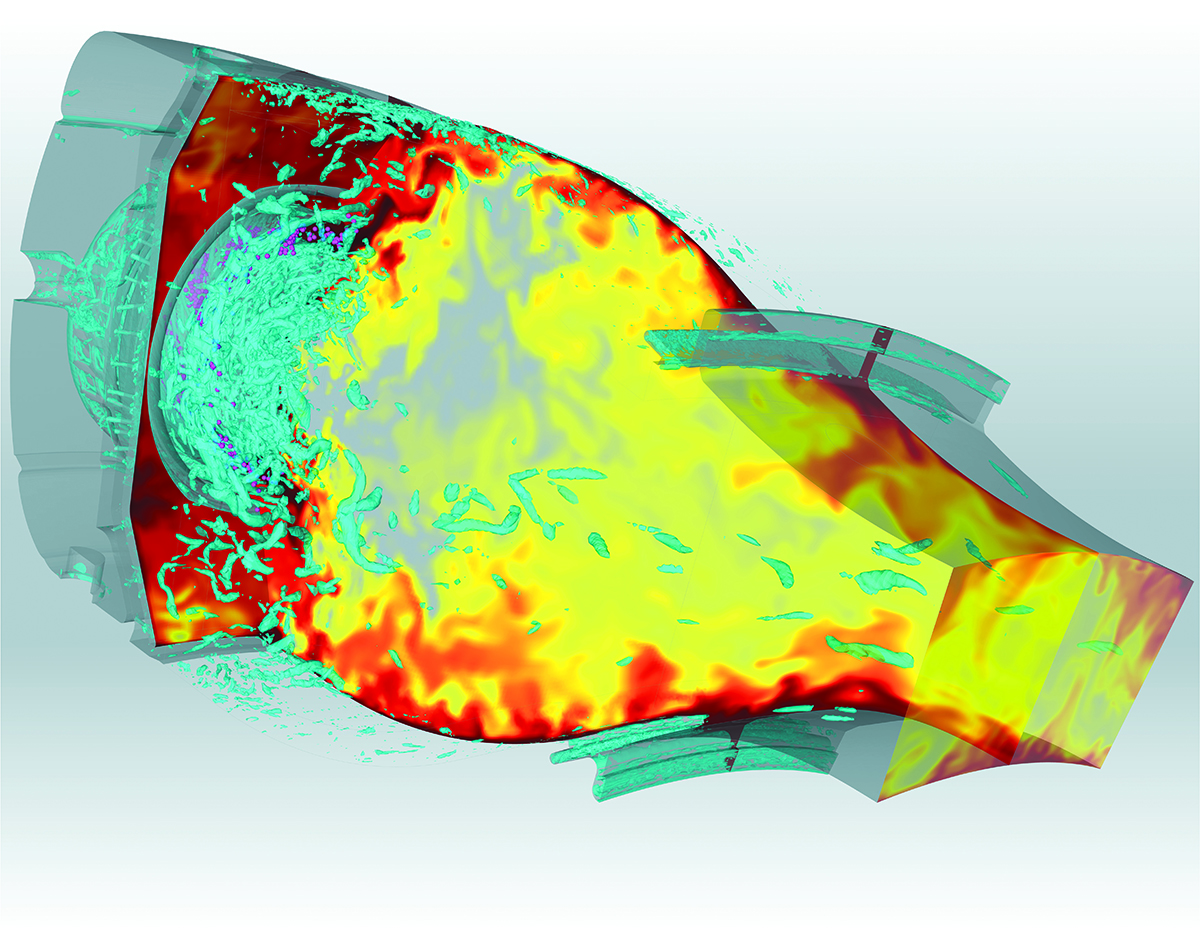
March 17, 2020
Dear readers:
Our hearts and minds are with everyone who has been affected by the coronavirus and the COVID-19 pandemic. GE has been doing challenging work for more than a century, and the company has always found a way to respond and lead through difficult times. It will continue to do so. We will keep you informed and bring you the innovation and technology stories you’ve come to expect from us.
— The GE Brief Team

A BURNING QUESTION
How hot is a jet engine? So hot that scientists have enlisted the world’s most powerful computers to figure out how to cool them without sacrificing the energy the heat can deliver. “Just like biologists use microscopes or astronomers use telescopes, high-fidelity simulations empower researchers to see what they otherwise could not,” says Rick Arthur, an engineer at GE Research. The fidelity’s about to get even higher, as Arthur and his colleagues have been granted the use of one of the world’s fastest supercomputers.
Sim city: That’d be Summit, housed at Oak Ridge National Laboratory in Tennessee. “It opens up a whole new area of predictions we never would have been able to do,” says Michal Osusky, a lead thermosciences engineer at GE Research. Osusky and Arthur say the supercomputer simulations can point them to breakthroughs in jet engine and gas turbine design, as well as create a “gold standard data set” that will allow scientists to analyze previously hidden problems and illuminate potential solutions.
Can computers teach engineers to build better engines? Learn more here.
CHAMPION OF INNOVATION
From showing that a potentially revolutionary way to generate energy was too good to be true to lobbying for quantum mechanics as the future of data encryption, Jim Bray has helped steer scientific inquiry at GE Research with impressive grace under pressure. As chief scientist at GE’s research arm, he’s spent his 45-year career helping scientists solve complex problems by molding and managing interdisciplinary teams for breakthrough projects like GE’s first full-body MRI machine.
Lab leader: Bray took up physics in college because it was the hardest thing he could think of. This year, he earned one of the highest honors in the physics community, the American Physical Society’s George E. Pake Prize. In a nod to his work in the lab and in the office, the award recognizes outstanding work by physicists with accomplishments in original research as well as leadership in managing research and development. Bray has been a bridge between research scientists and key research managers, and that’s not a role he’s eager to give up. Even as emeritus, he’s still tackling about 70% of what he did as a full-timer, taking his own advice to “never stop learning.”
Read more about Jim Bray here.
COOLEST THINGS ON EARTH ?
1. They’ve Got Some Nerve
Researchers at the University of Michigan are using machine learning algorithms to amplify faint signals from arm nerves in amputees to enable finger-level control of a robotic hand.
2. Beyond Beans
A Seattle startup has developed a way to make coffee “molecule by molecule” without a bean in sight.
3. Thinking Ahead
Stanford University researchers scanned people’s brains as they watched videos and then used the brain scans to predict which videos would go viral online.
Read more here about this week’s Coolest Things on Earth.
— QUOTE OF THE DAY —
“That transfer of ideas … it can be illuminating. The best ideas happen between the disciplines.”
— Jim Bray, chief scientist at GE Research
Quote: GE Reports. Image: GE Research.
ENJOY THIS NEWSLETTER?
Please send it to your friends and let them know they can subscribe here.




